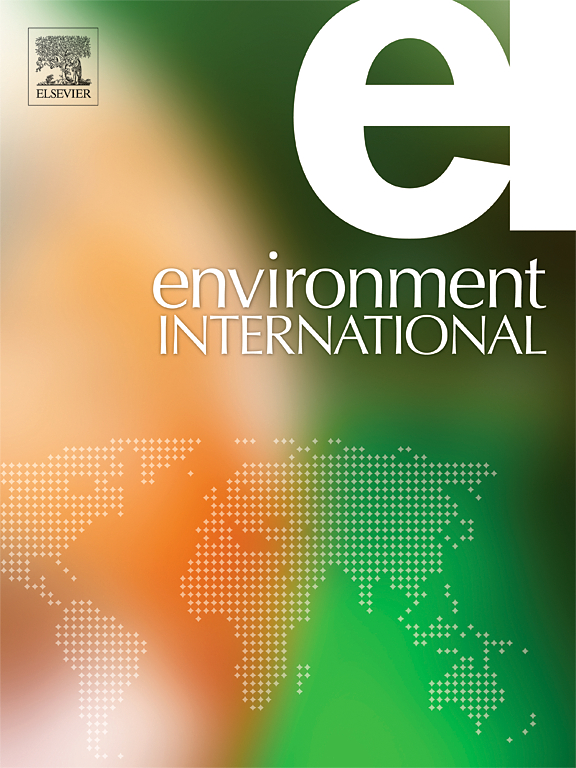Single-cell analysis reveals antibiotic affects conjugative transfer by modulating bacterial growth rather than conjugation efficiency
IF 10.3
1区 环境科学与生态学
Q1 ENVIRONMENTAL SCIENCES
引用次数: 0
Abstract
Antibiotic resistance genes (ARGs) pose a significant threat to human health and the environment. Quantifying the efficiency of horizontal gene transfer (HGT) is challenging due to diverse biological and environmental influences. Single-cell level approaches are well-suited for investigating conjugative transfer, given its reliance on cell-to-cell contact nature and its capacity to offer insights into population-level responses. This study introduces a self-developed system for automated time-lapse image acquisition and analysis. Using a custom dual-chamber microfluidic chip and Python-based image analysis pipeline, we dynamically quantify the ARGs conjugation efficiency at single-cell level. By combining experiments with individual-based modelling, we isolate the effects of subinhibitory antibiotic concentrations on conjugation efficiency from those related to bacterial growth dynamics. No significant variation in Escherichia coli conjugation efficiency was observed across kanamycin concentrations (0 to 50 mg l−1). Moreover, recipient cells with higher growth rates show a greater propensity for plasmid acquisition, suggesting the physiological state of cells pre-conjugation influences their susceptibility to gene transfer. Our methodology eliminates population growth bias, revealing the intrinsic nature of conjugation efficiency. This approach advances our understanding of the factors influencing HGT efficiency and holds promise for studying other microbial interactions.
Synopsis
This study employs single-cell analysis to reveal that subinhibitory concentrations of antibiotics affect the conjugative transfer of antibiotic resistance genes by modulating bacterial growth rate rather than conjugation efficiency.
单细胞分析表明,抗生素通过调节细菌生长而不是结合效率来影响共轭转移
抗生素耐药基因(ARGs)对人类健康和环境构成重大威胁。由于受到多种生物和环境的影响,对水平基因转移(HGT)效率的量化具有挑战性。单细胞水平的方法非常适合于研究共轭转移,因为它依赖于细胞间接触的性质,并且能够提供对群体水平反应的见解。本研究介绍了自行开发的延时图像自动采集与分析系统。利用定制的双腔微流控芯片和基于python的图像分析管道,我们在单细胞水平上动态量化了ARGs的共轭效率。通过将实验与基于个体的模型相结合,我们将亚抑制抗生素浓度对结合效率的影响从与细菌生长动力学相关的影响中分离出来。不同的卡那霉素浓度(0 ~ 50 mg l−1),大肠杆菌的结合效率无显著变化。此外,生长速率较高的受体细胞更倾向于获得质粒,这表明细胞预偶联的生理状态影响了它们对基因转移的易感性。我们的方法消除了人口增长偏差,揭示了共轭效率的内在本质。这种方法促进了我们对影响高温热转化效率的因素的理解,并为研究其他微生物相互作用带来了希望。本研究利用单细胞分析揭示了抗生素的亚抑制浓度通过调节细菌生长速率而不是结合效率来影响抗生素抗性基因的结合转移。
本文章由计算机程序翻译,如有差异,请以英文原文为准。
求助全文
约1分钟内获得全文
求助全文
来源期刊

Environment International
环境科学-环境科学
CiteScore
21.90
自引率
3.40%
发文量
734
审稿时长
2.8 months
期刊介绍:
Environmental Health publishes manuscripts focusing on critical aspects of environmental and occupational medicine, including studies in toxicology and epidemiology, to illuminate the human health implications of exposure to environmental hazards. The journal adopts an open-access model and practices open peer review.
It caters to scientists and practitioners across all environmental science domains, directly or indirectly impacting human health and well-being. With a commitment to enhancing the prevention of environmentally-related health risks, Environmental Health serves as a public health journal for the community and scientists engaged in matters of public health significance concerning the environment.
 求助内容:
求助内容: 应助结果提醒方式:
应助结果提醒方式:


